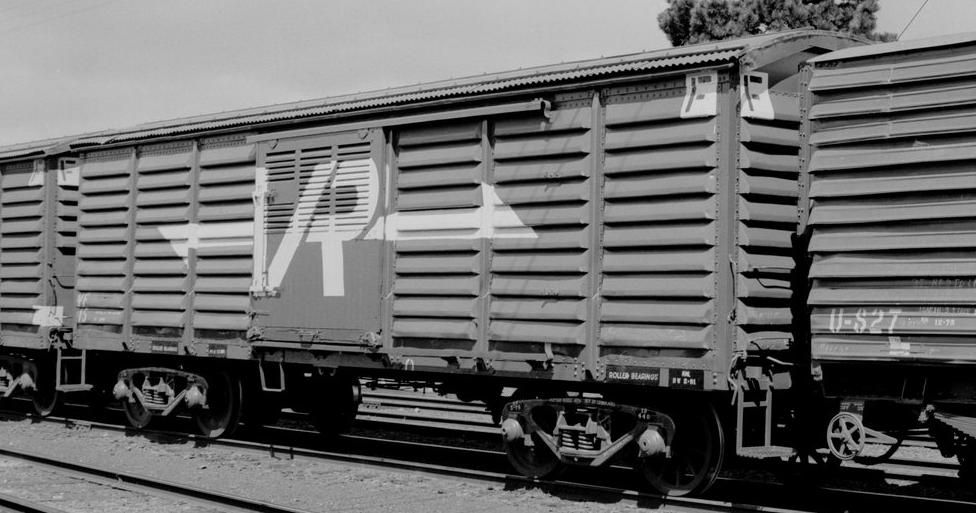

To provide for more rolling stock on the standard gauge and faster train running, many wagons were upgraded with better bogies.
The VF class had origins in the
_V__ class of 1925. VF's began appearing 1961, with most of the fleet being converted. The VF number group was 1 - 81, V82 being scrapped in 1960.
As there was some confusion with vehicles being suitable for operation between broad and standard gauge the letter 'X' was introduced from 1963. The letter 'X' vehicles required Grade Control and uniform brake rigging attachments, bogie fittings and a suitable class and number information plate.
Conversion was started in 1967 for converting the VF class to VX but was halted due to the expense of conversion. The only vehicle in the process of conversion was VF 29 and this was returned to traffic as a VF after the Grade Control equipment was removed. It came out of the workshops retaining the large class and number board, the only VF so fitted ( CME memo 20/12/1967 ).
Traffic was very general, with a few being allotted to 'Paper' trains.
In the 1979 recoding , the few remaining vans were recoded to VLBY.
The numbers recorded by the author as being VLBY were: 2, 17, 44, 54, 65, 66, 69, 72 and 81.
In 1983 with changes to passenger train running and set makeup, some of the VLPY bogie passenger vans were down rated and placed into freight service. Bogies from these vehicles were placed under steel box vans in freight service to become _D__ vans.
The VLBY ex VLPY vans were numbered in the group 100 - 149.
About 1988, the letter 'Y' as last letter in the code was found to be an incorrect application. The letter 'Y' was altered to letter 'F'. This changed the class to VLBF.
By 1991 most of these wagons were out of service and stored. During the early to mid 1990's these wagons were scrapped or sold as bodies. Some can be found in the Bendigo area on farms.
Vehicle history lists: _VF_ , VLBY